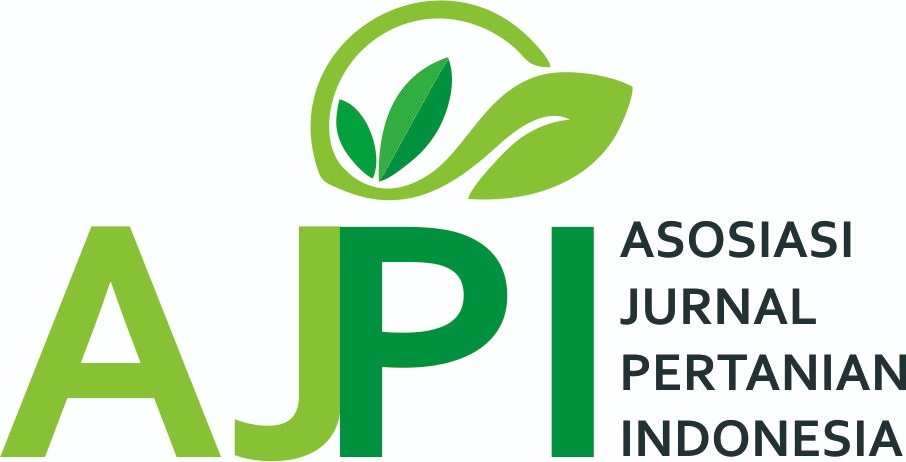Fattening Management Of Skinny Bali Catle Variety (Bos Sondaicus) By Utilization Of Agricultural Waste And Local Plant In Sumbawa
Abstract
Sumbawa is one area that has the potential to be developed as a center for beef cattle production which is quite competitive in Indonesia. The proportion of cattle in Sumbawa itself is around 21% which is generally dominated by the Bali cattle variety (Bos sondaicus). Therefore, a business that has great potential to support this goal is cattle fattening. Unfortunately, one of the main problems encountered in fattening cattle is the cost of feed. Thus, the management of Bali cattle fattening that utilizes agricultural waste for the manufacture of feed is urgently needed. In addition, the management of fattening cattle must also be complemented by other components, such as the manufacture of medicines to treat diseases of underweight Bali cattle using local plants, the process of bathing, drying, and monitoring the cattle to be fattened. From the research and observations conducted, it is known that the time needed to get the cow display condition with ideal characteristics and optimal weight in the fattening process is 3 months. During this time, the selling price of lean fattened cows increased by about 2-2.3 times. It can be concluded, that the fattening management of lean Bali cattle carried out in Pungka Village, Unter Iwes District, Sumbawa Regency is quite profitable. In addition, this can also be used as part of community waste management that is integrated with community livestock business.
Downloads
References
Agustono, B., Lamid, M., Ma’ruf, A., & Purnama, M. T. E. (2017). Identifikasi Limbah Pertanian dan Perkebunan Sebagai Bahan Pakan Inkonvensional di Banyuwangi. Jurnal Medik Veteriner, 1(1), 12–22. https://doi.org/10.20473/jmv.vol1.iss1.2017.12-22
Astuti, A., & Santosa, P. E. (2015). Pengaruh Cara Pemberian Konsentrat-Hijauan Terhadap Respon Fisiologis dan Performa Sapi Peranakan Simmental. Jurnal Ilmiah Peternakan Terpadu, 3(4), 201–207.
Baharun, A., Belli, H., & Hine, T. (2017). Karakteristik Pejantan Muda Sapi Bali pada Pertenakan Rakyat di Desa Merbaun Kabupaten Kupang. Jurnal Peternakan Nusantara, 3(1), 11–16. https://doi.org/10.30997/jpnu.v3i1.850
Berawi, K. N., Wahyudo, R., & Pratama, A. A. (2019). Potensi Terapi Moringa oleifera (Kelor) pada Penyakit Degeneratif. Jurnal Kedokteran Universitas Lampung, 3(1), 210–214. http://repository.lppm.unila.ac.id/20716/1/2229-2949-1-PB.pdf
BPS NTB. (2019). Jumlah dan Jenis Populasi Ternak 2017-2019. https://ntb.bps.go.id/indicator/24/152/1/jumlah-dan-jenis-populasi-ternak.html
Dewi, T. F., & Saryanto. (2019). Gambaran Tanaman Obat untuk Mengatasi Gangguan Pencernaan pada Pasien Diabetes Mellitus di Rumah Riset Jamu “Hortus Medicus.” Prosiding Pokjanas TOI Ke 57, 69–73.
Distanbun NTB. (2009). Pijar: Sapi, Jagung, dan Rumput Laut. https://distanbun.ntbprov.go.id/
Hasmila, I., Amaliah, & Danial, M. (2015). Efektivitas Salep Ekstrak Ekstrak Daun Sirsak (Annona muricata L.) pada Mencit yang Terinfeksi Bakteri Staphylococcus aureus. Prosiding Seminar Nasional Mikrobiologi Kesehatan Dan Lingkungan, 1(1), 54–62.
Hilmiati, N. (2019). Sistem Peternakan Sapi di Pulau Sumbawa: Peluang dan Hambatan untuk Peningkatan Produktivitas dan Pendapatan Petani di Lahan Kering. SOCA: Jurnal Sosial Ekonomi Pertanian, 13(2), 142–154. https://doi.org/10.24843/soca.2019.v13.i02.
Ilham, N. (2001). Prospek Pasar dan Sistem Tata Niaga Ternak dan Daging Sapi di Nusa Tenggara Barat. Wartazoa, 11(2), 32–43.
Nurcahyanti, B. T., Hartanto, R., & Harjanti, D. W. (2020). Konsumsi Serat Kasar, Kecernaan Serat Kasar dan Produksi Lemak Susu dengan Pemberian Tepung Temulawak (Curcuma xanthorrhiza Roxb.) pada Sapi Laktasi. Jurnal Peternakan Sriwijaya, 9(2), 35–43. https://ejournal.unsri.ac.id/index.php/peternakan/article/view/11771
Sandi, S., Desiarni, M., & Asmak. (2018). Manajemen Pakan Ternak Sapi Potong di Peternakan Rakyat di Desa Sejaro Sakti Kecamatan Indralaya Kabupaten Ogan Ilir. Jurnal Peternakan Sriwijaya, 7(1), 21–29.
Silalahi, M. (2019). Botani dan Bioaktivitas Pulai (Alstonia scholaris). Jurnal Pro-Life, 6(2), 136–147.
Soekardono, Kasip, L. M., Erwan, Abdullah, U., Bulkaini, Harjono, & Sutaryono, Y. A. (2013). Analisis Koefisien Teknis Ternak Sapi Guna Penyusunan Parameter Teknis Peternakan dan Kesehatan Hewan di Nusa Tenggara Barat.
Tim Sumbawa Beef. (2016). Roadmap Daging Sapi Sumbawa (Sumbawa Beef) Kabupaten Sumbawa. https://www.sumbatimurkab.go.id/wisata-laut.html
Copyright (c) 2022 Mega Trishuta Pathiassana, Aris Sugiarto, Ahmad Yamin

This work is licensed under a Creative Commons Attribution-ShareAlike 4.0 International License.
Author retains the copyright and grants the journal the right of first publication of the work simultaneously licensed under the Creative Commons Attribution-ShareAlike 4.0 License that allows others to share the work with an acknowledgement of the work's authorship and initial publication in this journal













